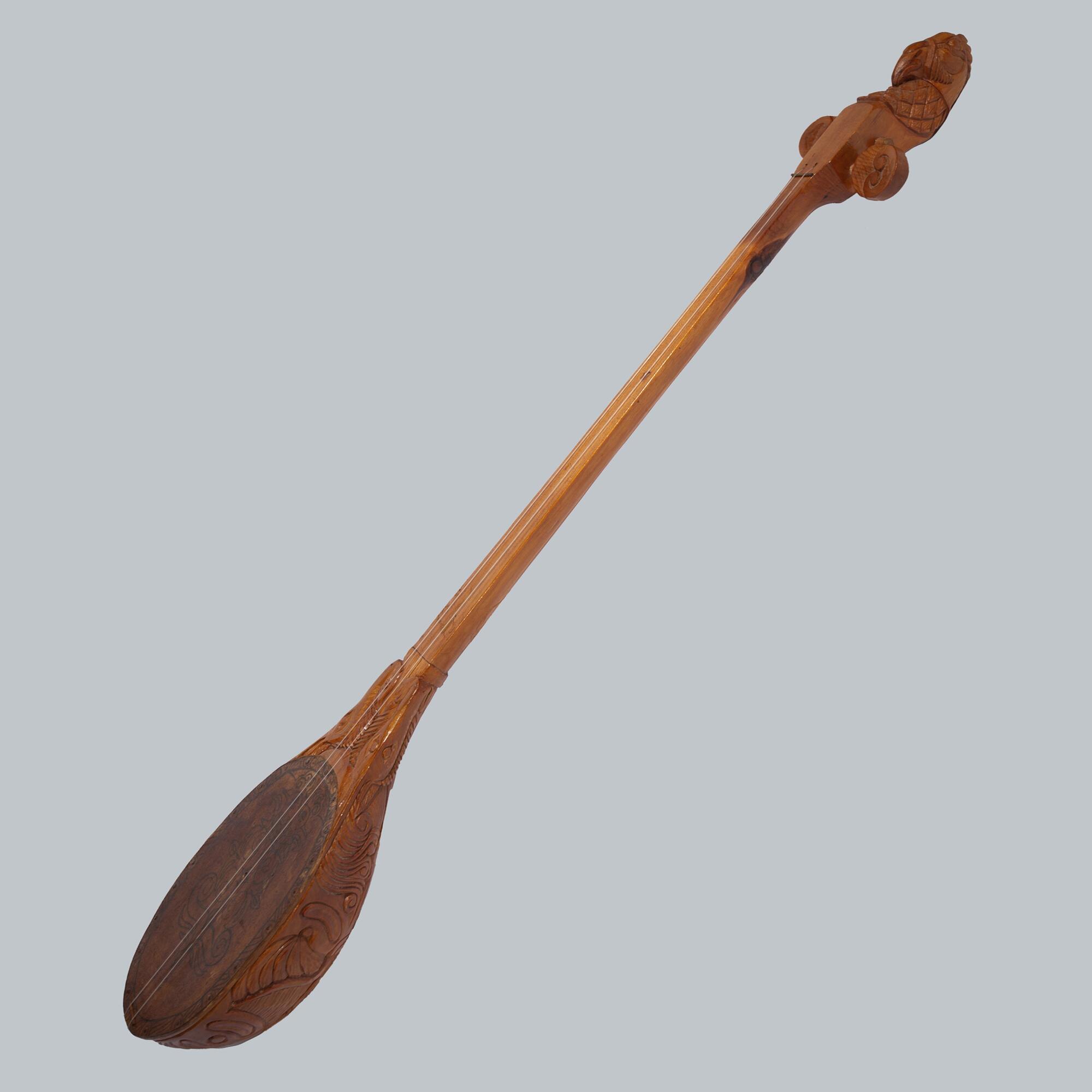The topshur (also spelled topshuur) is the most widespread instrument among Altai kaychi storytellers. They play the topshur and narrate folk tales (such an accompaniment is known as kaidyn kuuzi). Moreover, meditation, dancing, and simple tunes can be accompanied by the topshur. There is also a term for solo topshur improvisation — “topshur oynop jat”.
Although “topshur” is literally translated as “a percussive musical instrument”, there are several techniques for producing sound from the topshur, and the type of accompaniment depends on the content of the music piece. The most common technique consists in strumming both strings rhythmically with the fingers. For example, it can be used to imitate a fast race or other movement. A lyrical mood can be achieved by plucking the strings with the thumb (pizzicato) or rapidly articulating notes on one string (tremolo).
The topshur has no standard tuning, and its range rarely exceeds one octave. Each musician tunes the strings, taking into account their own performing style.
The composer and ethnographer Andrey Anokhin wrote that Asians “consider a fourth to be the most consonant interval because they begin and end singing with this interval, regarded as the most harmonious chord.”
Other peoples also have similar ancient instruments: the Kazakhs have the “sherter”, the Khakasses — “khomys”, the Shors — “sherchen khomus”, the Mongols — “topshur”, and the Tuvans — “dopshulur”. Traditionally, the body and fingerboard are carved out of a solid piece of pine or cedar, chiseled out, and covered with raw calfskin that is stretched on top (such a topshur should be dried over the fire before playing). Instead of calfskin, thin wooden boards can be used. The former produce a duller sound, while the latter resembles the sound of a semi-acoustic guitar.
The shape of the sound board varies: it can be rounded, triangular, square, or spoon-shaped. The sound board (or membrane) has one or several small resonator holes.
The strings of the topshur were traditionally woven into thin ropes using hair from a horsetail (usually white). The strings were fastened to the instrument’s body using leather straps on one end and wound around wooden pegs on the other end. The displayed topshur made at the end of the 20th century has synthetic strings.
The exhibit used to belong to Bolot Bayryshev, a
popular master of Altai throat singing “kai”, an Honored Artist of Russia and
the Altai Republic.




